How to Take Body Measurements
Accurately and consistently taking body measurements with a tape measure can help gauge weight loss and body recomposition while keeping you motivated and accountable!
If you want to super charge your fitness results, stay motivated, and truly assess how your body is changing over time, learning how to take body measurements and doing so frequently is a total game-changer. I like to think of it as a road map through our online personal training journey. Body measurements, along with clear progress photos, tell us specifically where you are beginning and then allow us a clear picture of how your body is changing over time.
Consider this: if you were taking a road trip, you would not just guess your way to your destination, right? You would keep track along the way, referring to the map and making sure that you are going in the right direction. With your fitness journey, body measurements are the map. They show you where you have been and point toward your end goal. They show you the bumps in the road and allow you to be real with yourself. I love that body measurements show you the tangible results of all your hard work, which can be super motivating!
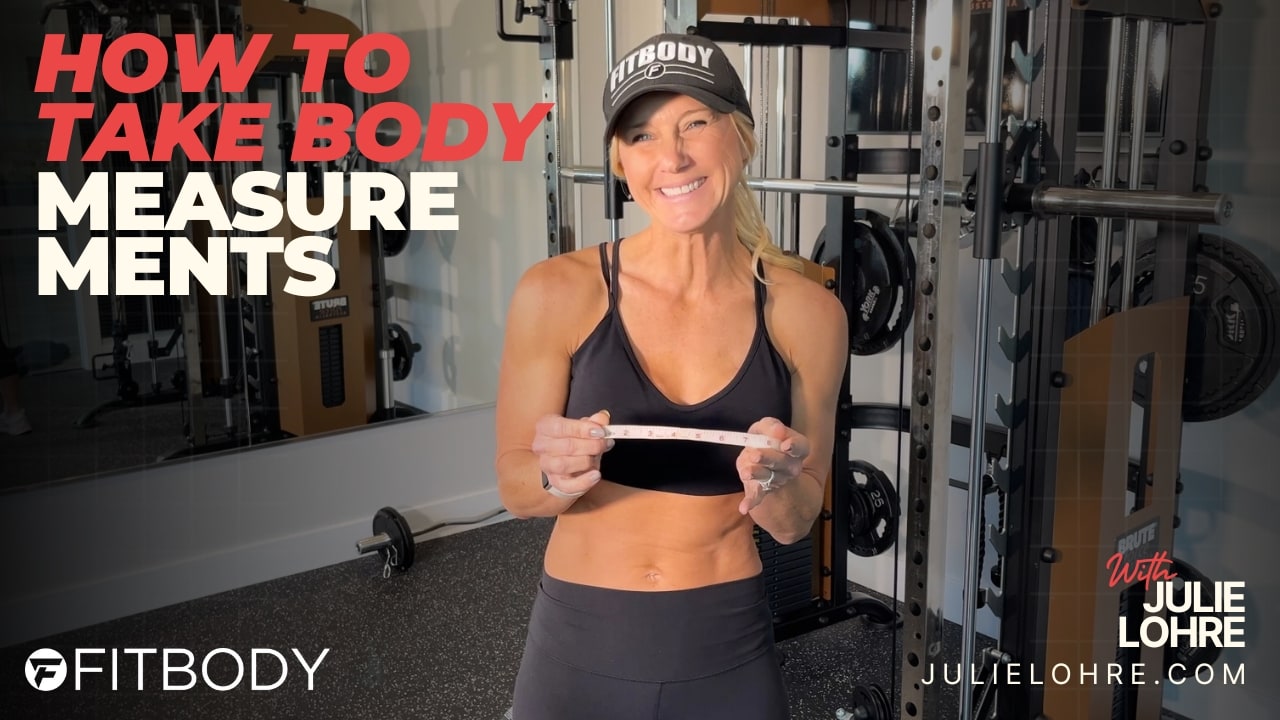
After all, making changes and losing body fat on your body recomposition journey is not just about the scale. While we will track your weight through our training together, weight can be tricky. It can fluctuate for a bunch of reasons like water retention or muscle gain. But measurements? Once you learn how to take body measurements accurately, they give you the real-deal info on how your body is changing. Maybe you’re losing inches even if the scale isn’t budging, and that’s a victory in itself!
One of the best things about taking body measurements is that it allows women to set realistic fitness goals and expectations. As we track how your body is changing over time, I am going to help you set achievable targets based on your individual progress. These check ins with measurements allow me to customize your fitness journey to suit YOU.
Importantly to me as your fitness coach, body measurements help me tweak your training and nutrition programs. They provide us concrete evidence showing if things are working… or not. That allows me to adjust your training and nutrition plans accordingly. I consider accurate and consistent body a non-negotiable. They keep you motivated, on track, and ensure that your fitness plan is tailor-made to suit your body’s needs. Total win-win! But first, I want to be sure that you know how to take body measurements accurately, even if you have to do them yourself.
What to Wear for Body Measurements
When you are taking body measurements, it is important to have the tape measure as close to your skin as possible. For most measurements, it is best to not have clothing on that specific area. For most women that want to know how to take body measurements, wearing a bathing suit or shorts and a sports bra is ideal. Try to wear the same outfit for your measurement check ins every 2 weeks.
How do you take body measurements step by step?
1. Wear thin clothing or a bathing suit that will not effect your measurements.
2. Stand up straight , do not suck in your stomach or hold your breath while doing measurements.
3. Use a flexible tape measure for each of the following:
Chest (fullest part around the bust)
Upper Arm/Bicep (not flexed, arm straight out)
Waist (smaller part of the waist region)
Hips (fullest part of the glutes)
Thigh (directly mid-thigh)
Calf (largest part)
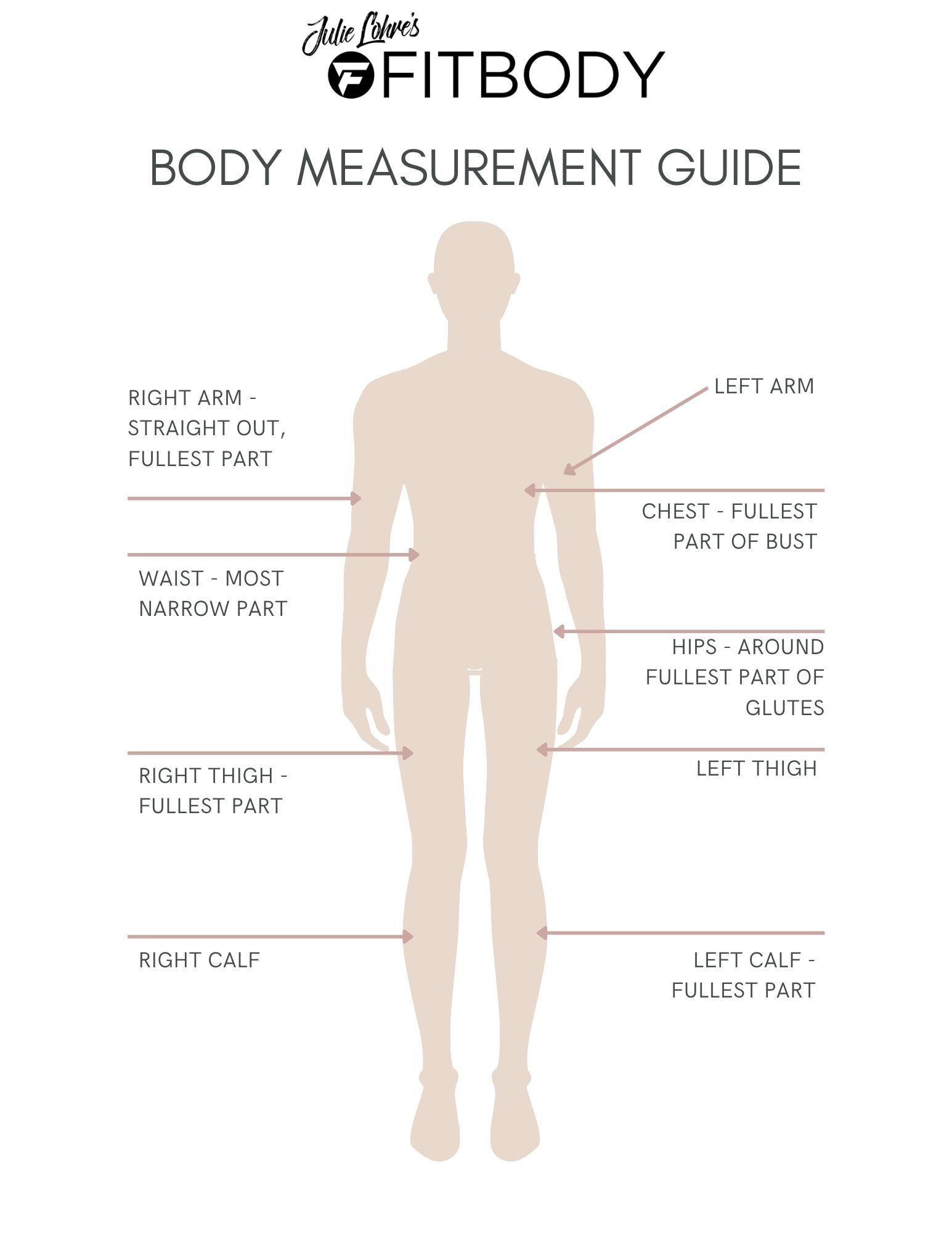
Chest Measurement: Begin the chest measurement by taking the flexible tape measure under your arms and around your back brining the end to overlap at the widest or fullest part of your bust. If you are wearing a bra for this measurement, be sure to wear the same one each time and avoid padded or push-up bras.
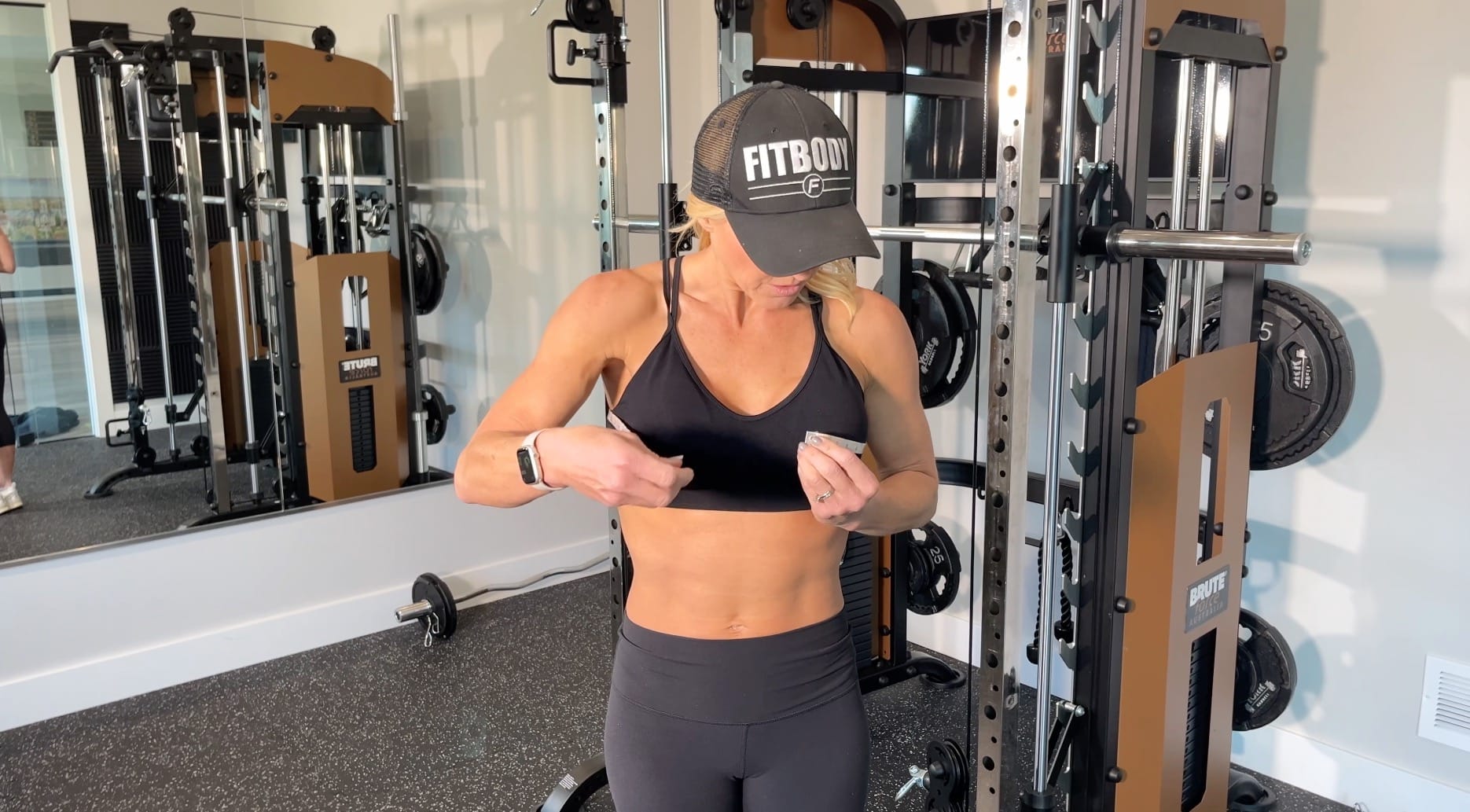
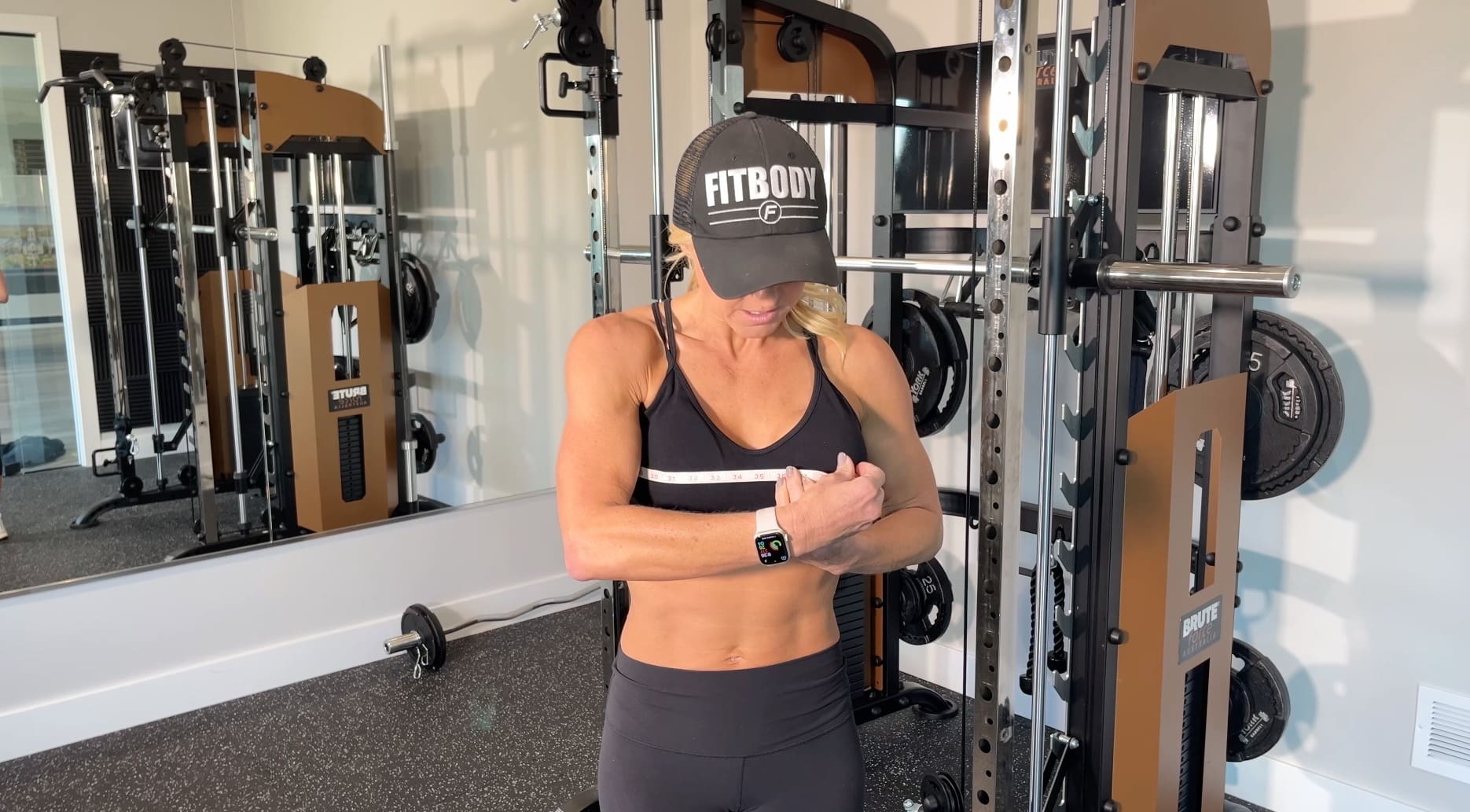
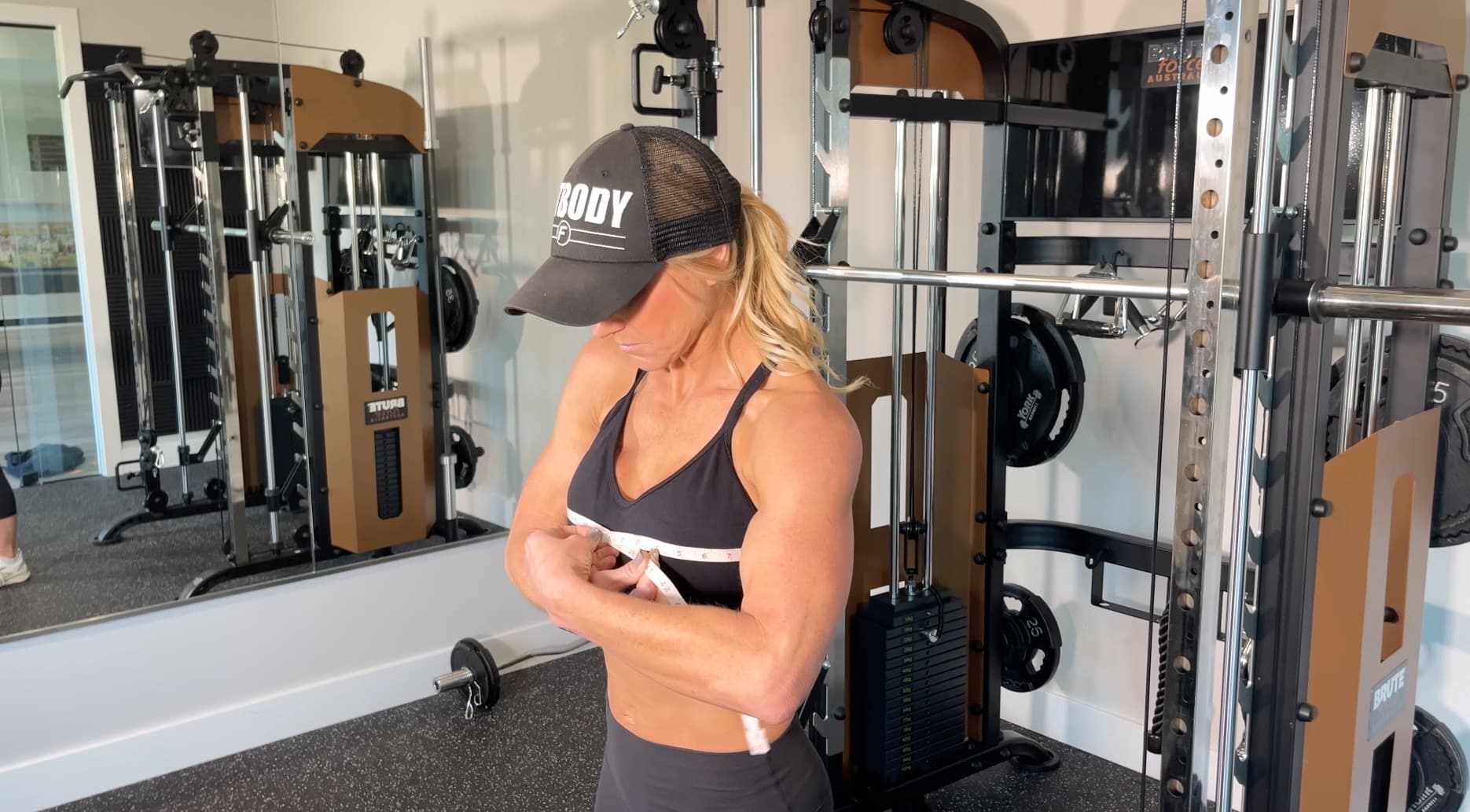
Waist Measurement: Bring the flexible tape measure around your core at the smallest part of your waist. Generally this will be in line with your belly button.
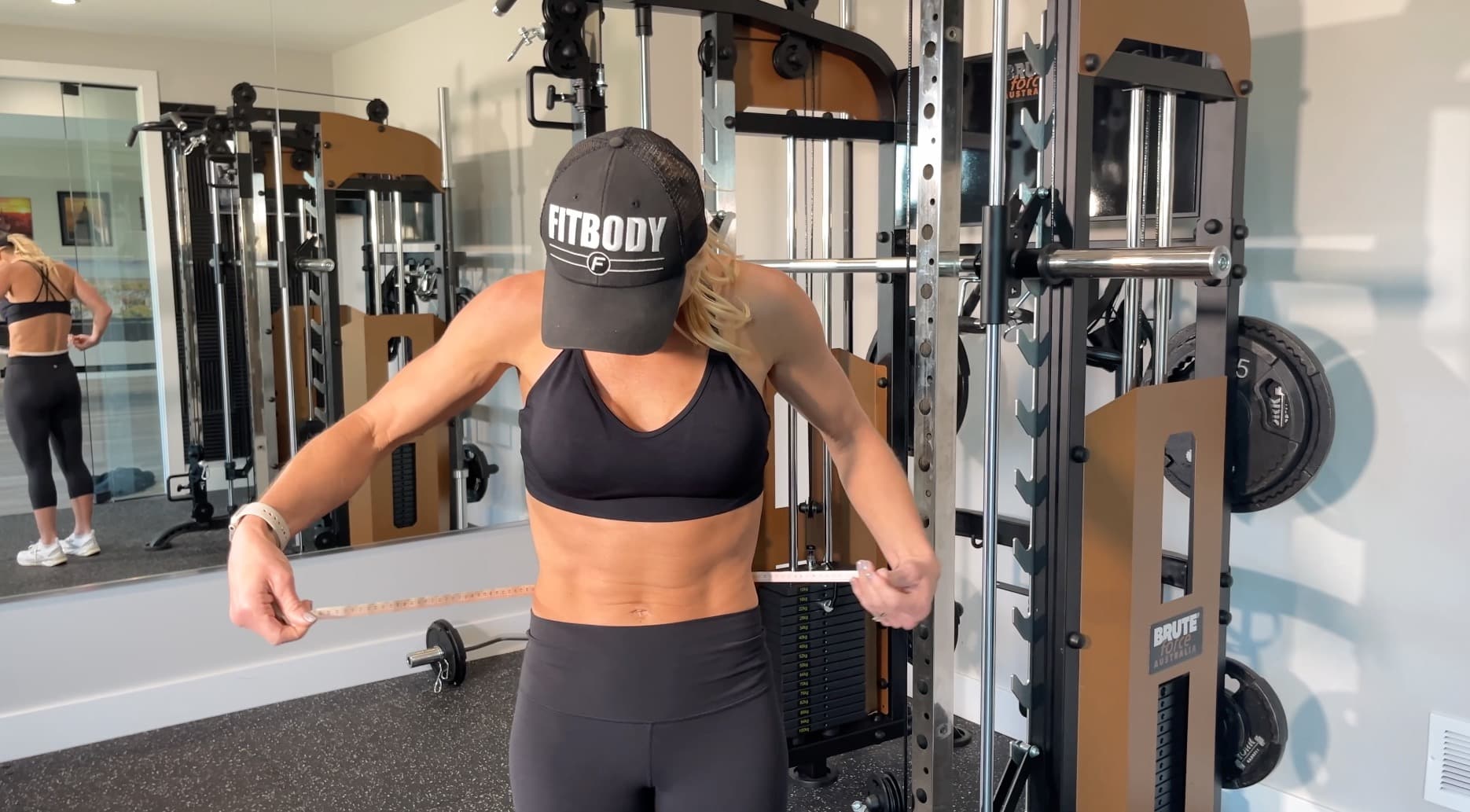
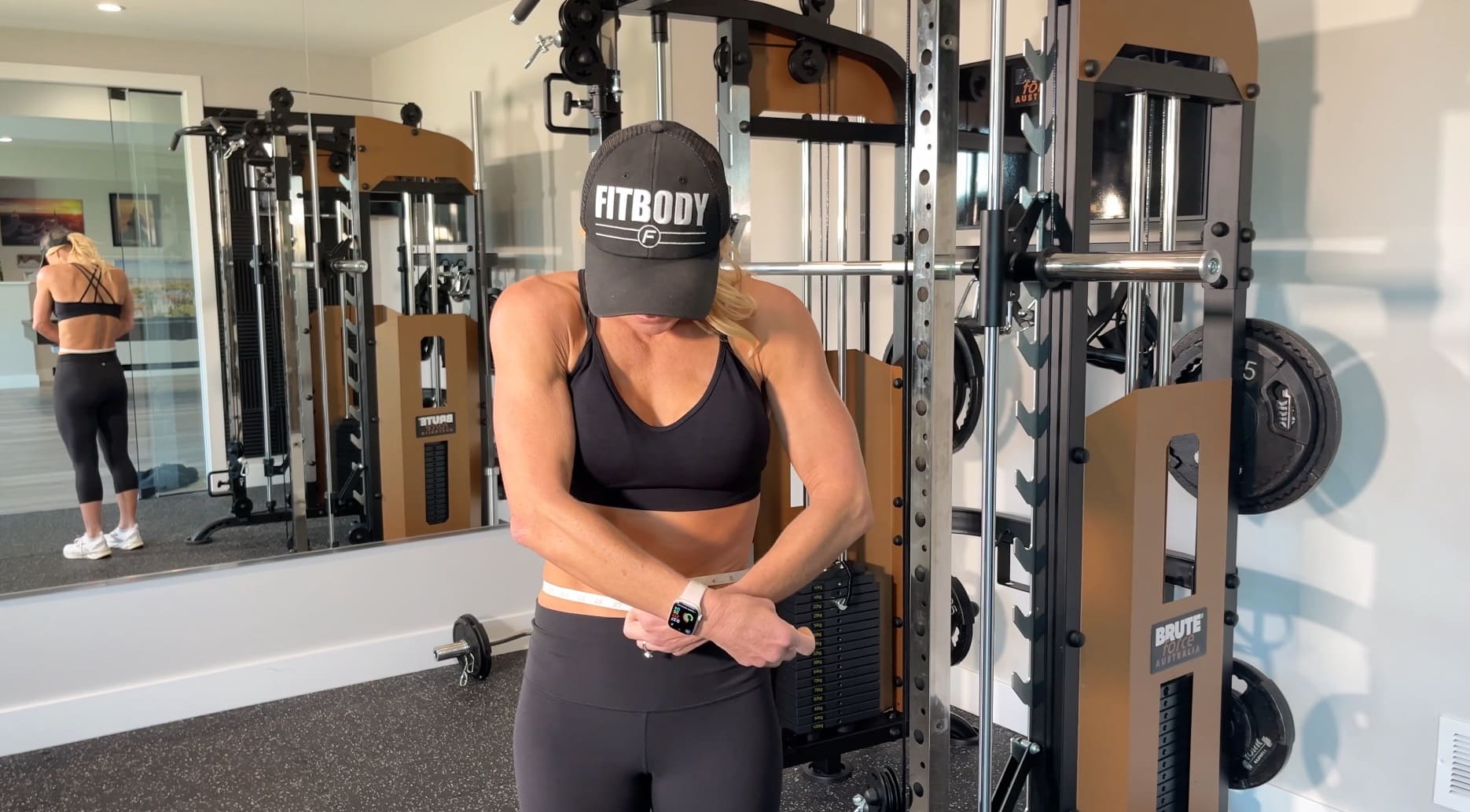
Hip Measurement: I prefer the hip measurement to be taken at the fullest part of your glute. Bring the tape measure around your glutes, wrapping it to the front across the pelvic bone.
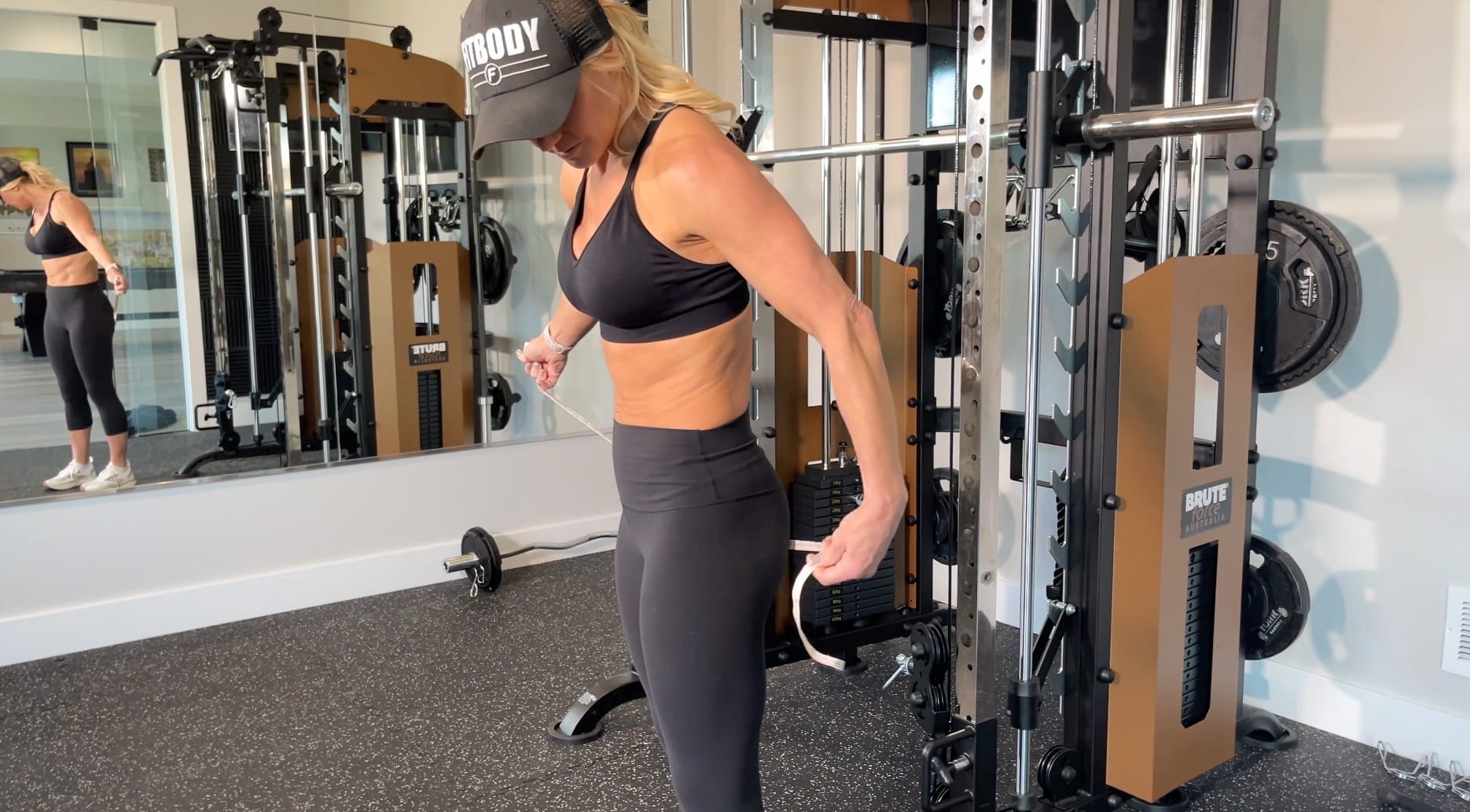
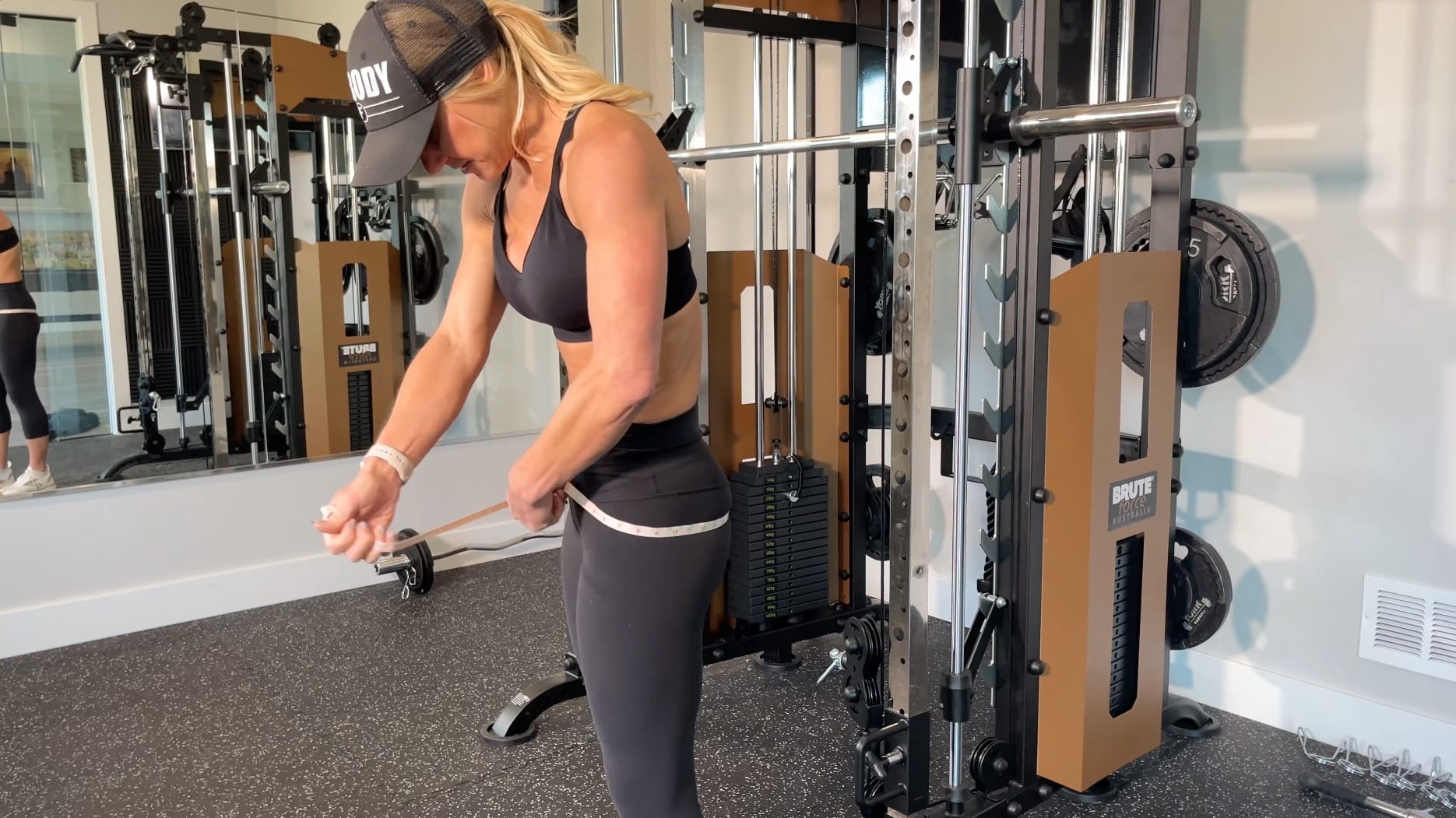
Thigh Measurement: You will want to measure the circumference of your thigh at the midpoint between your hip and knee, using the widest part. Ensure the tape measure is parallel to the ground for an accurate measurement.
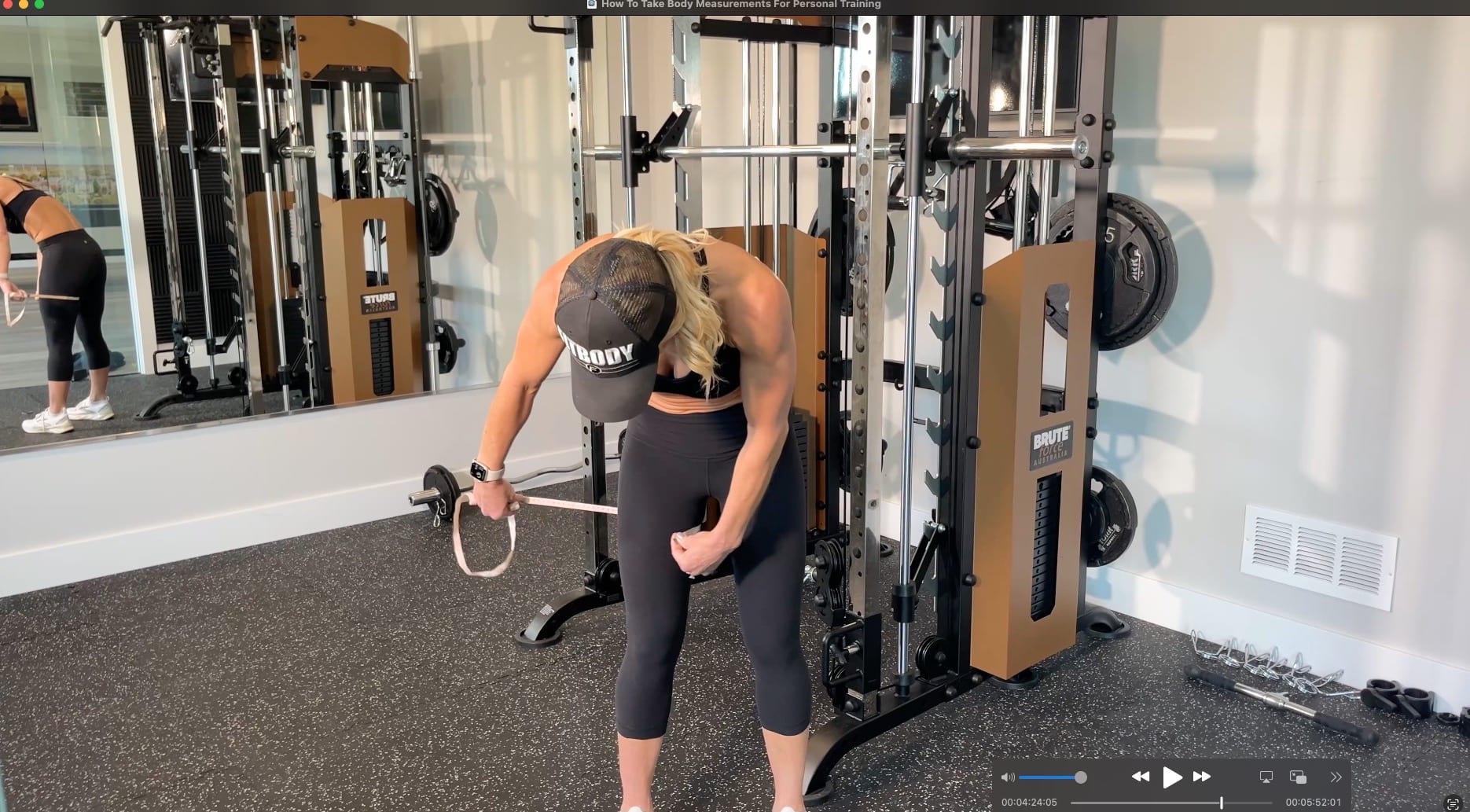
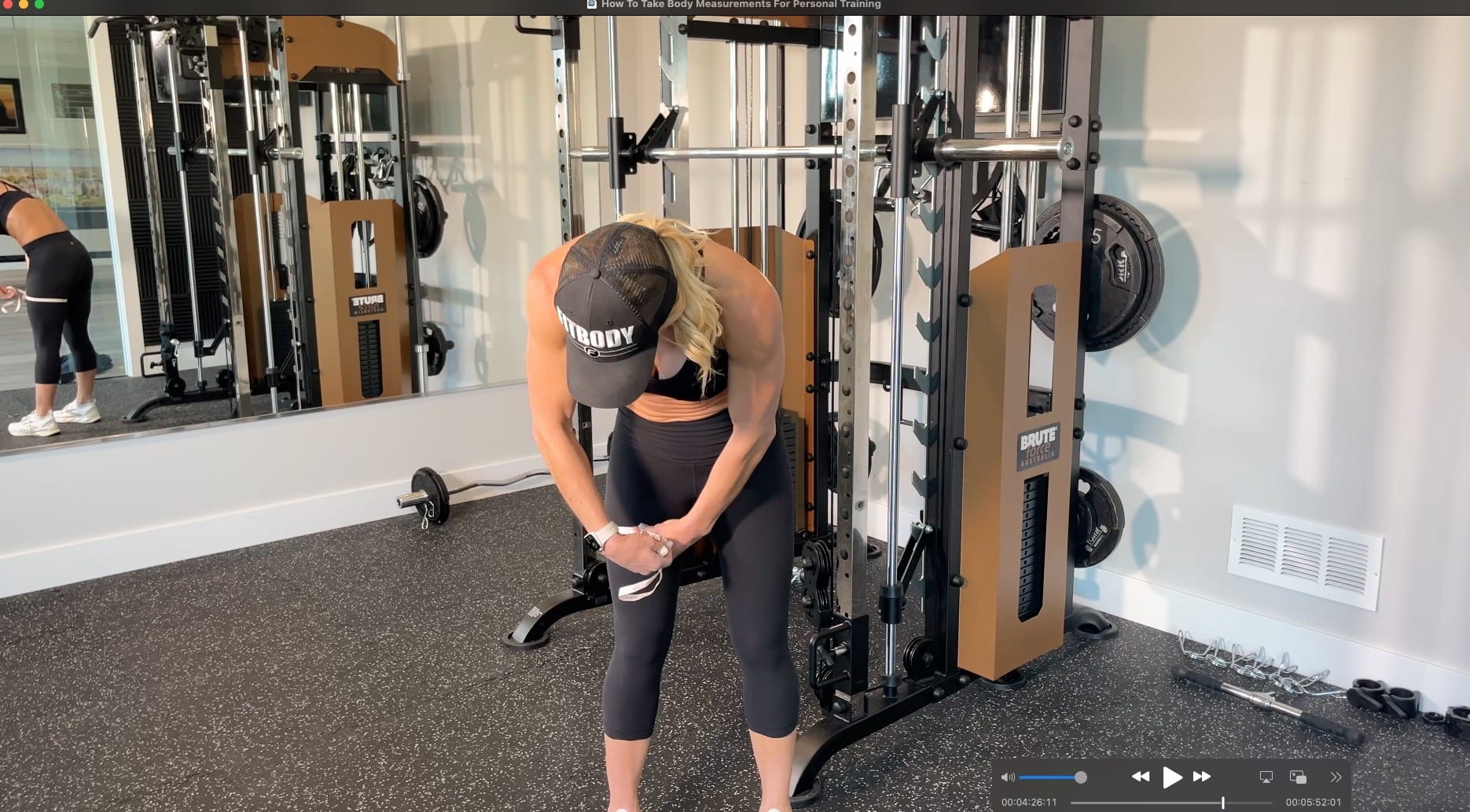
Calf Measurements: To measure your calf, place the tape measure around the thickest part of your calf muscle, ensuring the tape is snug but not too tight. Keep the tape parallel to the ground for consistency and ensure you are in a standing position.
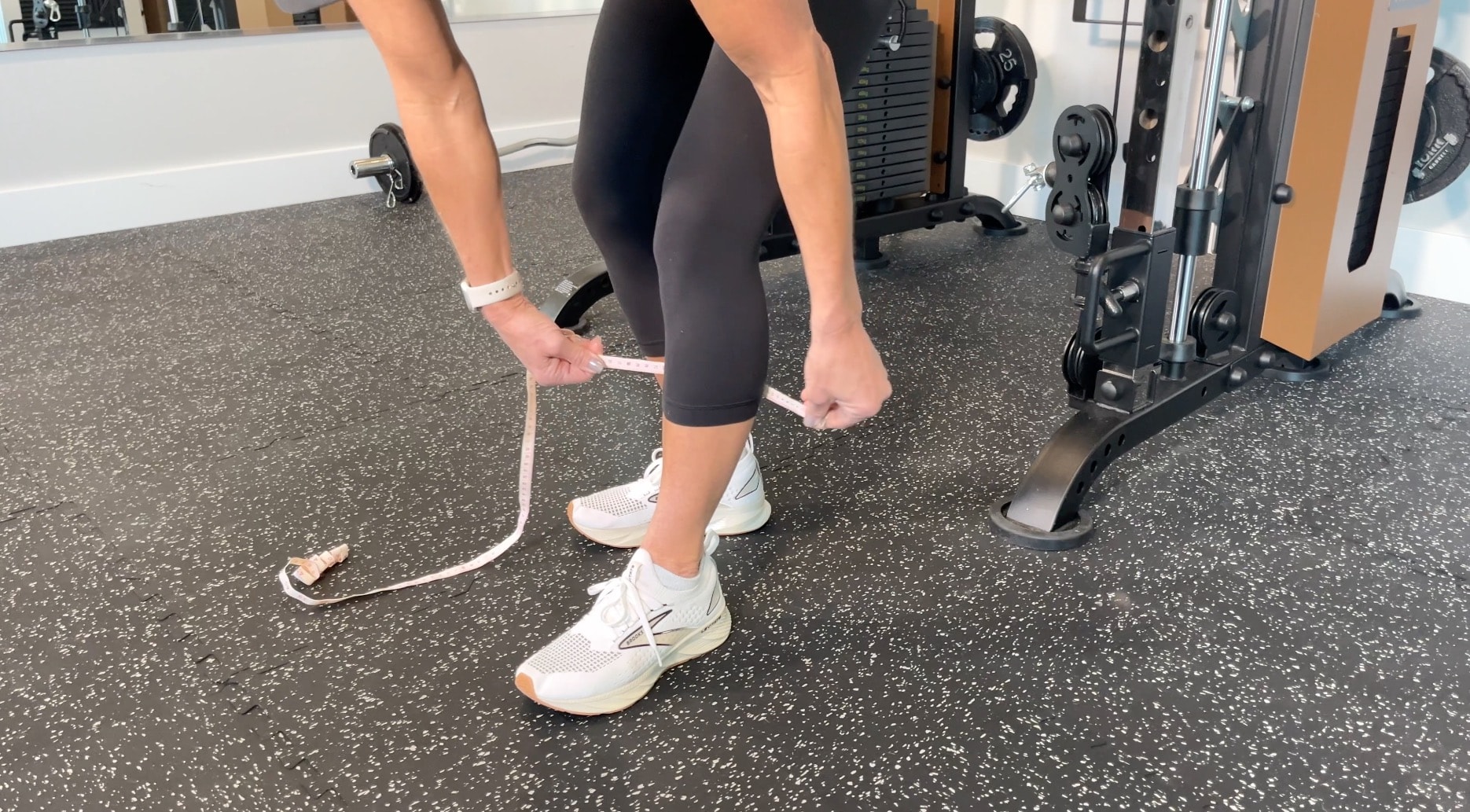
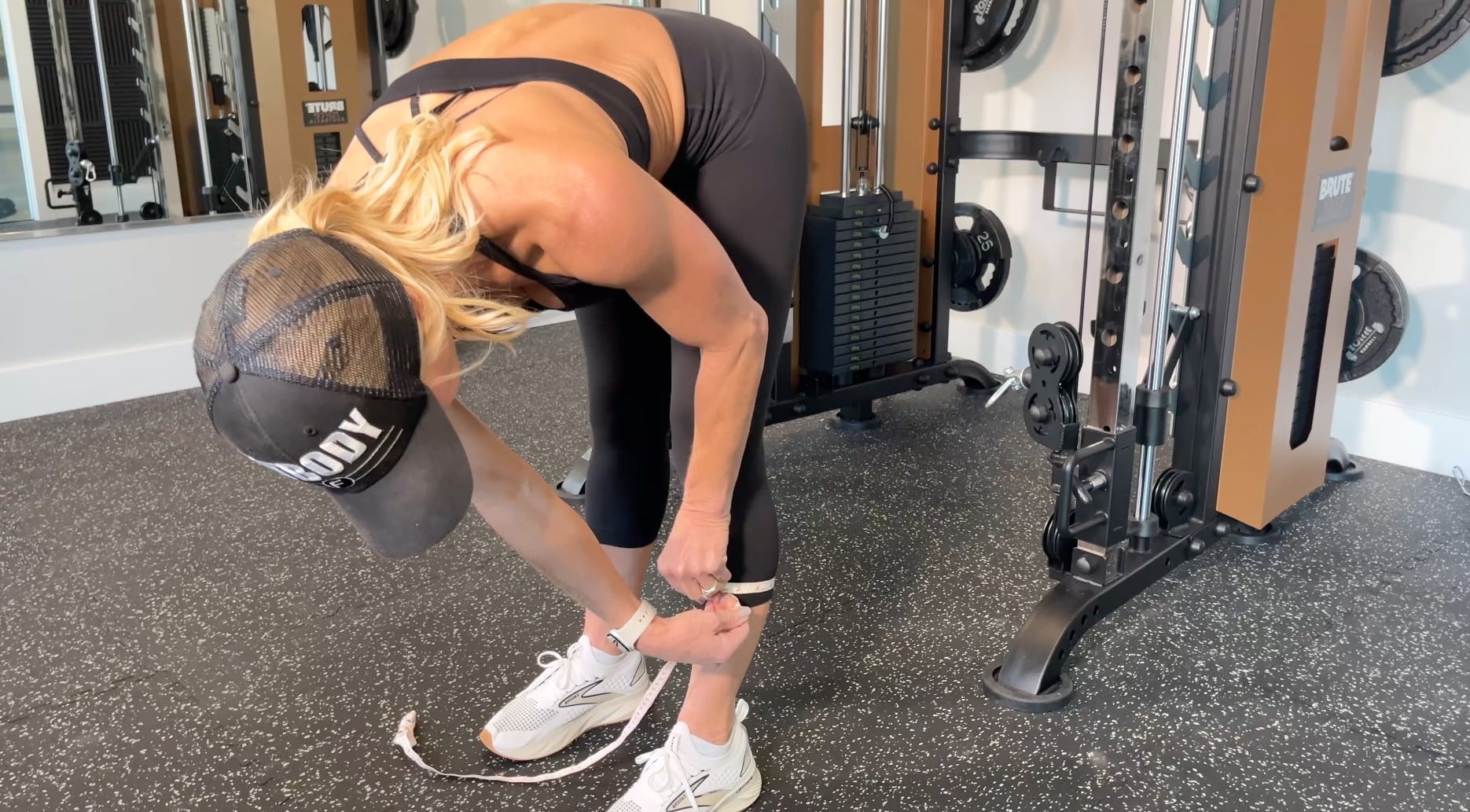
Bicep Measurements: For an accurate bicep measurement, measure around the fullest part of your bicep with your arm out to your side, straight – not bent or flexing.

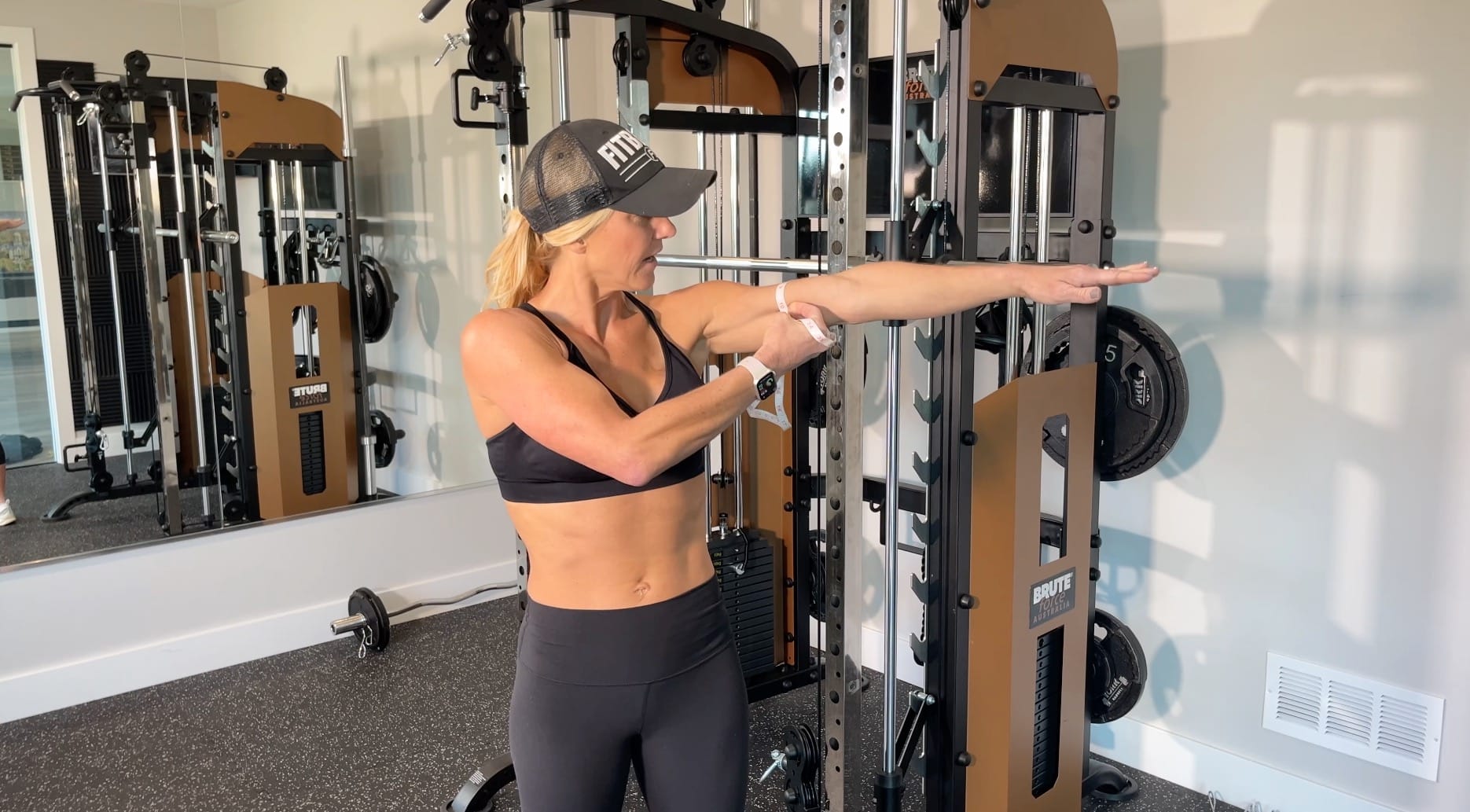
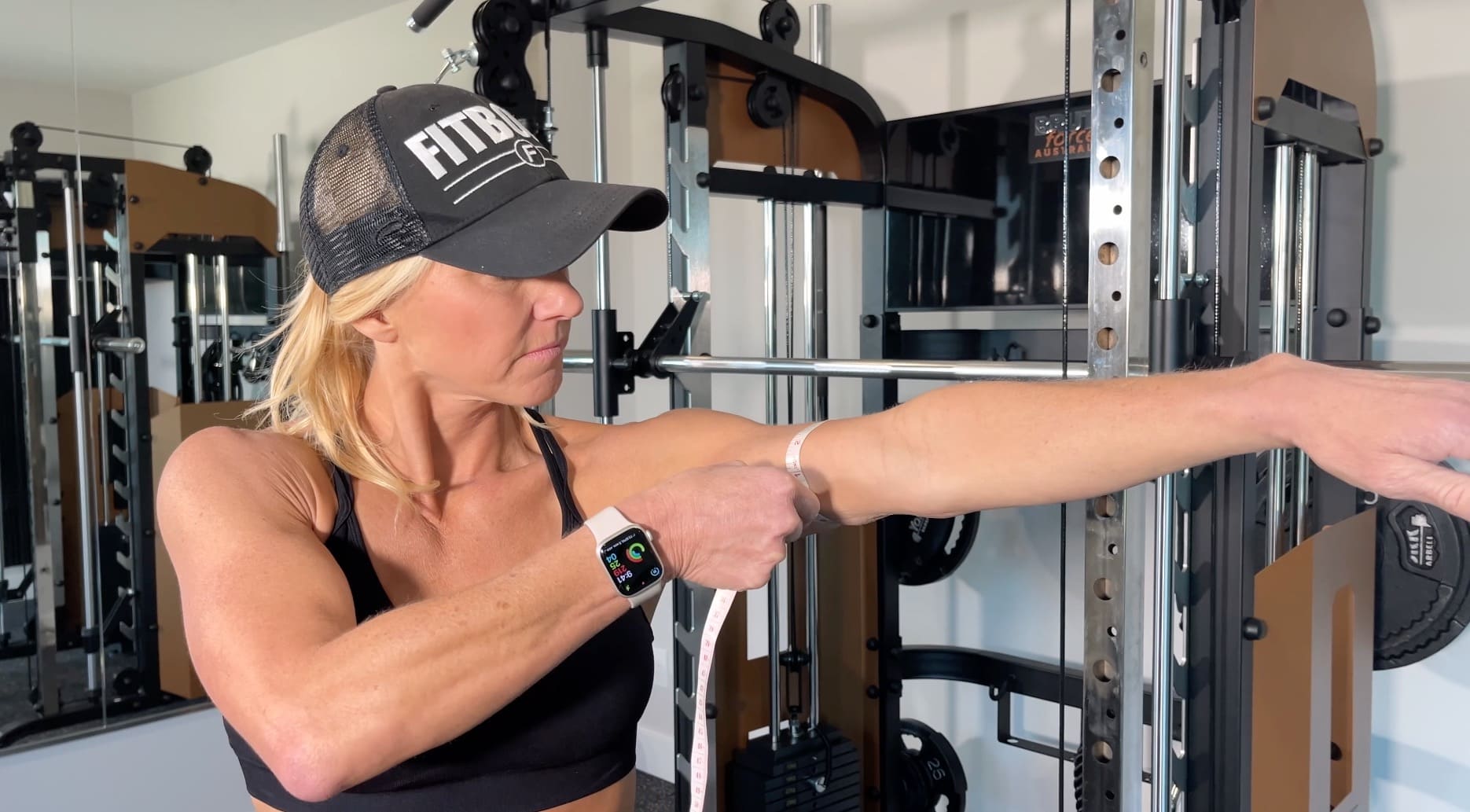
How to Take Body Measurements Tip & Tricks:
While measuring your body, ensure that the tape measure is always level, or horizontal, to ensure accuracy. Keep the tape measure firmly against your skin, but do not compress the skin. Be sure also to take your weight. Consistency is key here. Ideally you want to take your weight on a reliable scale once every 2 weeks at the same time of day each time. Early morning before you eat is best when considering timing for how to take measurements.
Common Mistakes when Taking Body Measurements
When using a flexible tape measure to take body measurements for weight loss, make sure to watch out for some of the following common mistakes.
- Stretching the tape too tight: Pulling the tape measure too tightly can give inaccurate measurements. Ensure the tape is snug but not constricting.
- Inconsistent placement: Ensure the tape is consistently placed at the same level and position for each measurement. Inconsistent placement can lead to inaccurate readings.
- Measuring over bulky clothing: To get precise measurements, it’s crucial to measure over thin, form-fitting clothing or directly on the skin. Bulky clothing can add unnecessary bulk to the measurements.
- Using different tape measures: Stick to using the same sewing tape for all measurements to maintain consistency. Different tape measures can have slight variations, leading to discrepancies in readings.
- Measuring at different times of the day: Body measurements can slightly fluctuate throughout the day due to factors like food intake, hydration, and activity levels. To maintain accuracy, measure at the same time of day consistently.
- Neglecting to record the measurements: Failing to record the measurements accurately can lead to confusion and an inability to track progress effectively. Make sure to record each measurement accurately and keep a log for easy comparison over time.



